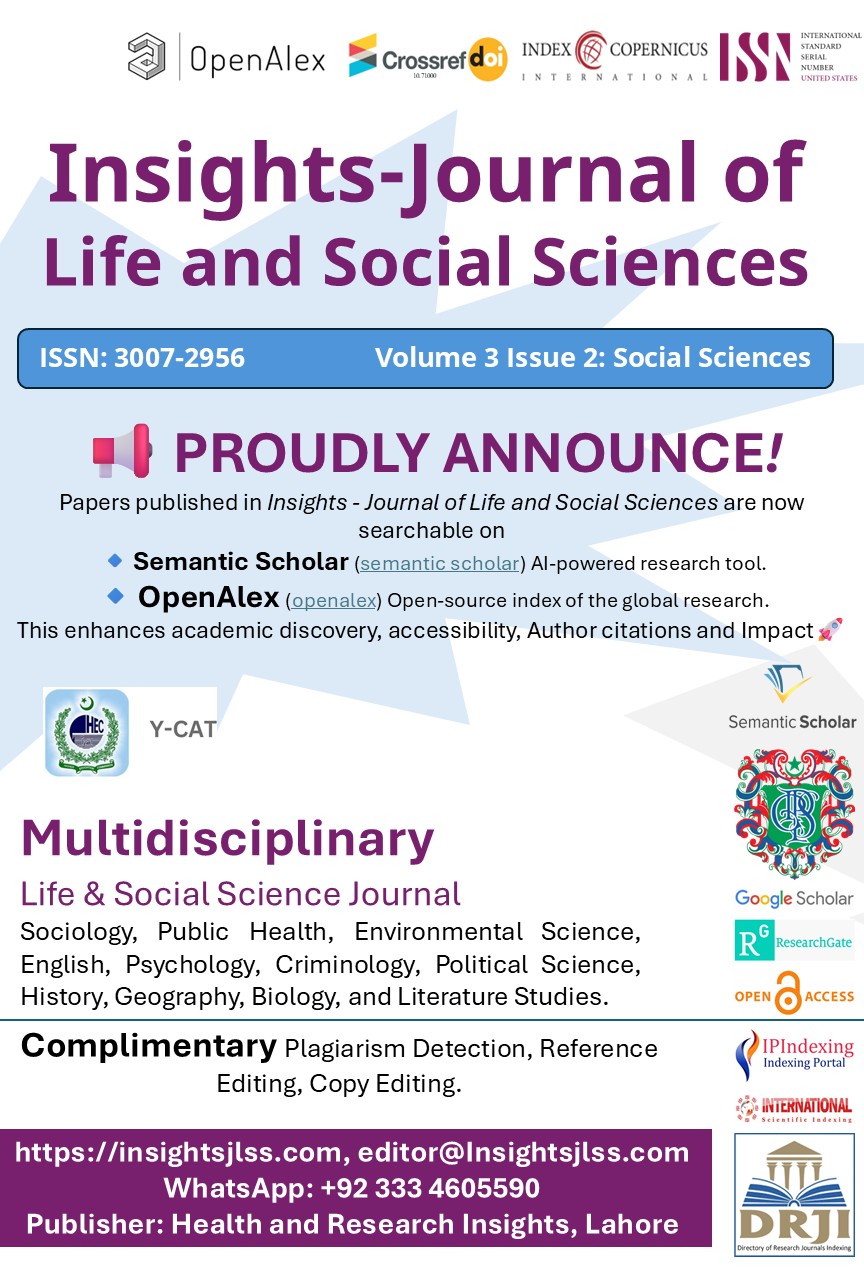PREVALENCE, RISK FACTORS, AND CALCIUM CONSUMPTION FOR OSTEOARTHRITIS IN THE ADULT POPULATION OF SINDH
Main Article Content
Abstract
Background: Osteoarthritis (OA) is a leading cause of chronic joint pain and disability worldwide, characterized by the degeneration of articular cartilage, subchondral bone remodeling, and synovial inflammation. Despite its increasing prevalence, especially in aging populations, limited data are available on OA epidemiology and risk factors in Sindh, Pakistan. Lifestyle choices, obesity, genetic predisposition, and dietary calcium intake are key contributors to OA development, necessitating a detailed assessment of their impact on the region’s adult population.
Objectives: This study aims to determine the prevalence of osteoarthritis in the adult population of Sindh, identify major risk factors associated with OA, and assess the role of dietary calcium consumption in disease prevention and progression.
Methodology: A cross-sectional study was conducted across various cities in Sindh, including Karachi, Hyderabad, Nawabshah, Sukkur, and Larkana. A total of 245 participants were recruited using convenience sampling, ensuring inclusion of both male and female adults while excluding individuals with prior bone injuries or surgical history. Data were collected via structured questionnaires covering demographic details, socioeconomic status, dietary habits, and OA symptoms. Statistical analysis was performed using SPSS version 22, with significance set at p < 0.05.
Results: The study found a high prevalence of OA in middle-aged adults, with the 51-60 years age group (40%) being the most affected. Women (51%) had a slightly higher OA prevalence compared to men (49%). Key risk factors included low calcium intake (54.1%), sedentary jobs (45.6%), obesity (39.4%), smoking (40.6%), and a family history of OA (36.7%). Regular exercise was observed to be protective against OA, with only 12.5% of active individuals experiencing the condition. Additionally, inadequate dairy intake was significantly associated with OA (54.1%), highlighting the role of calcium deficiency in disease progression.
Conclusion: Osteoarthritis is a major health concern in the adult population of Sindh, with modifiable lifestyle factors such as calcium intake, physical activity, and obesity playing critical roles in its prevalence. Public health interventions focusing on calcium-rich diets, weight management, and increased physical activity could help reduce OA incidence.
Article Details

This work is licensed under a Creative Commons Attribution-NonCommercial-NoDerivatives 4.0 International License.
